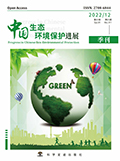参考文献
[1] Chrea S, Tudesque L, Chea R. Comparative assessment of water quality classification techniques in the largest north-western river of Cambodia(Sangker River-Tonle Sap Basin)[J]. Ecological Indicators, 2023, 154: 110759.

